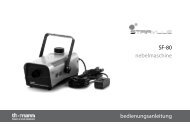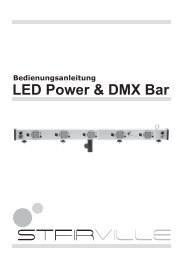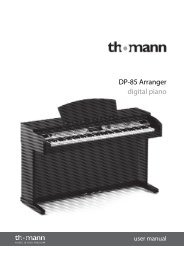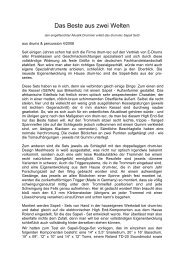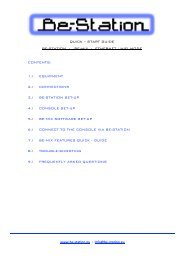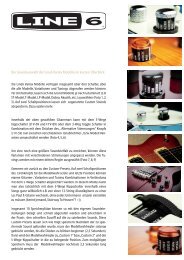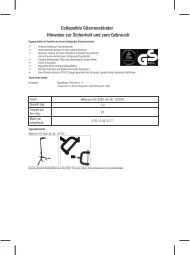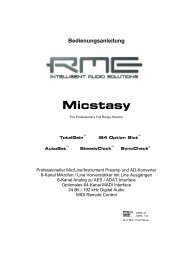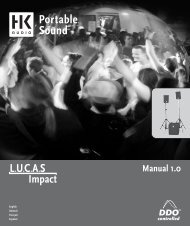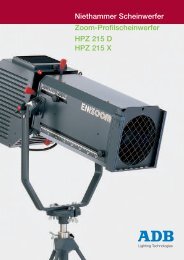You also want an ePaper? Increase the reach of your titles
YUMPU automatically turns print PDFs into web optimized ePapers that Google loves.
chapter 12 MIXING AND EFFECTS USAGE<br />
Overview<br />
The aim of this chapter is to help you approach mixing with BFD2, covering everything from use of mic channels to the built-in FX<br />
suite.<br />
Mixing advice<br />
These sections give you pointers on mixing – from using BFD2’s built-in control over mic channels, bleed and panning to routing<br />
functions, external processing and understanding how to mix each part of the kit.<br />
Please take the advice for what it is: a useful starting point if you’re inexperienced with mixing drums. It’s not intended as gospel<br />
or a set of rules. There are no rules – if you have your own ideas about your sound, we encourage you to experiment and be<br />
creative.<br />
12:1 Mixing basics<br />
How to approach mic channels, panning, gain, EQ and compression.<br />
12:6 Mixing each part of the kit<br />
Some helpful pointers on using EQ and other processing on various parts of the kit.<br />
12:7 Routing scenarios<br />
A guide to using BFD2’s routing functions for three common scenarios: creating a sub-mix, achieving mic channel separation over<br />
separate outputs and creating a send to an external reverb.<br />
12:8 External processing<br />
More creative advice on using external processing to take your drum sounds even further.<br />
BFD2 FX guide<br />
The BFD2 FX all contain a number of common controls, located at the top of each effect’s interface. See section 3:7 for more<br />
details about these controls, as well as for information on launching and managing effects in your mixes.<br />
The guide in this chapter contains suggested uses for common controls where particularly applicable, such as when using the<br />
Mix control for quick parallel compression effects.<br />
Note that it is beyond the scope of this guide to provide a full explanation of each effect and how it works – some familiarity with<br />
these types of processors is assumed.<br />
12:2 EQ and filtering<br />
A guide to BFD2’s EQ, Filter and FilterMod FX.<br />
12:3 Dynamics processing<br />
A guide to using BFD2’s dynamics processors: CompChan, CompBus and NoiseGate.<br />
12:4 Distortion<br />
A guide to the Drive and BitCrusher FX.<br />
12:5 Other effects<br />
A guide to the rest of the processors in BFD2: Gain, Delay, Flanger, Chorus, RingMod, FreqShift, TinCanVerb<br />
D.CAM FX<br />
FX labelled with the D.CAM logo are painstaking models of real-world analog circuits and components, including their non-linearities.<br />
These advanced modelling techniques bring you as close as possible to manipulating your sounds with real analog hardware.<br />
The fully D.CAM-modelled FX are the Comp Chan, Comp Bus, Filter Mod and Drive processors.<br />
The filters used in the EQ are also D.CAM modelled, as are filtering and drive elements of most of the other FX.<br />
1



